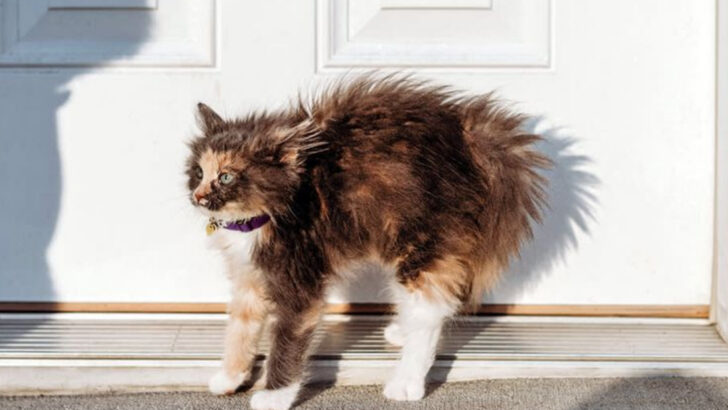Your cat isn’t just being “moody”—they might be under sonic attack. That hiss? That lunge? That sudden bolt under the couch? It could all be triggered by a sound you didn’t even notice. Some everyday noises—harmless to us—can flip a switch in your cat’s brain from curious to combative in seconds. From clinking dishes to whirring appliances, these sounds might be stressing your feline more than you realize. But don’t worry—it’s not all bad news. There are also a few magical tones that can soothe their soul and stop the tail-thrashing in its tracks. If your cat’s behavior suddenly changes, you might not need a vet or a trainer— you might just need to turn down the chaos.
Vacuum Cleaner
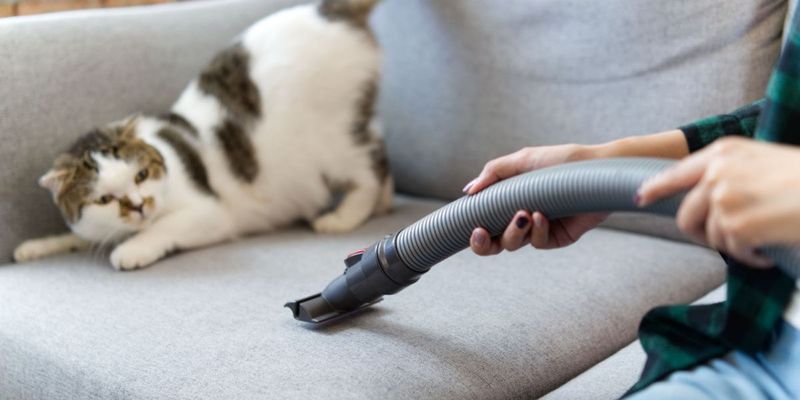
Ever noticed your feline friend bolting for cover when the vacuum roars to life? The vacuum cleaner’s loud noise can startle even the calmest cats. It disrupts their peaceful environment, turning curiosity into aggression. As the machine hums across the floor, its unpredictable movement adds to the unease.
Cats, with their acute hearing, perceive the sound as a potential threat. This triggers a fight-or-flight response, often leading to aggression. It’s a common cause of stress in many households. To mitigate this, try introducing the vacuum gradually, allowing your cat to explore it while it’s off.
Reward calm behavior with treats to build positive associations. Remember, patience is key in helping your cat adjust to this domestic necessity.
Thunderstorms

The sudden crash of thunder can send cats scurrying under the nearest piece of furniture. Thunderstorms are notorious for causing anxiety and aggression in felines. The unpredictable loud booms and flashes are unnerving to their sensitive ears.
Some cats may become vocal or aggressive, lashing out in fear. Creating a safe, cozy space can help alleviate this stress. Providing a quiet room with familiar scents and soft bedding might calm their nerves.
Additionally, playing a soothing playlist designed for cats during storms can mask the sound and ease their distress. Knowing your cat’s triggers is essential for managing their storm-related anxiety.
Fireworks
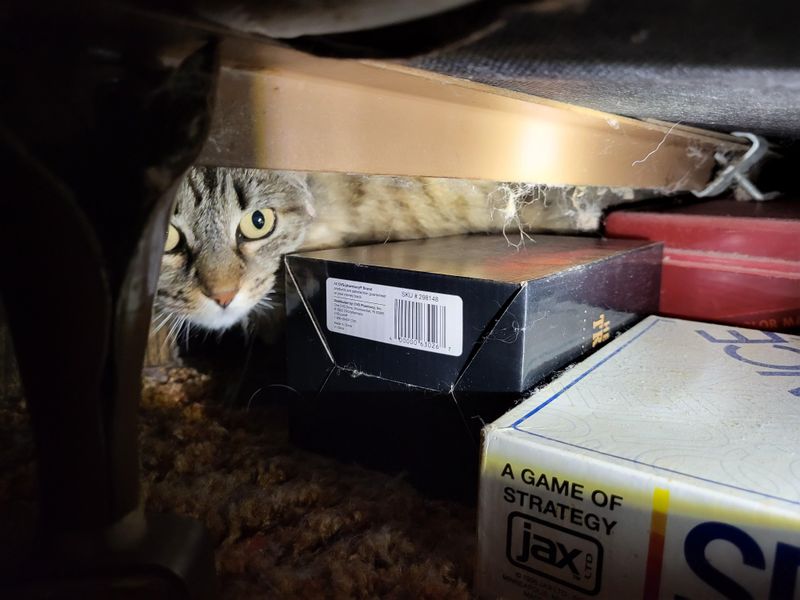
Fireworks, with their explosive sounds and bright flashes, can be a nightmare for cats. Many pet owners dread holidays with fireworks for this reason. The unpredictability and intensity of the noise can cause fear and aggression in cats.
Some may hide, while others might hiss or swipe defensively. Preparation is crucial; play soft music or use blackout curtains to muffle the sound and light.
Offering a safe retreat, like a cozy box or a quiet room, can help your cat feel secure. In extreme cases, consult your vet about calming solutions. Understanding your pet’s fears can help weather these noisy celebrations.
Loud Music

Blasting music might be enjoyable for humans, but it can be overwhelming for cats. Their sensitive ears can find high volumes distressing, leading to agitation or aggression.
Continuous exposure to loud music might even affect their hearing. To prevent stress, keep the volume moderate and observe your cat’s reactions. If they seem anxious or aggressive, offer a quiet space to retreat.
Alternatively, opt for music designed specifically for cats, which features frequencies and tempos that soothe rather than stress. Respecting your cat’s delicate hearing ensures a peaceful coexistence with your tunes.
Doorbells

The sudden ring of a doorbell can trigger an unexpected reaction from your cat. This abrupt sound often signals the arrival of strangers, which might stress your cat. Some cats may become defensive or aggressive when the doorbell rings.
Their territorial instincts kick in, causing them to perceive the sound as a threat. To ease this, desensitize your cat by playing doorbell sounds at a low volume and rewarding calm behavior.
Over time, they might associate the sound with positive experiences rather than stress. Training can transform these jarring sounds into just another part of the day.
Alarms
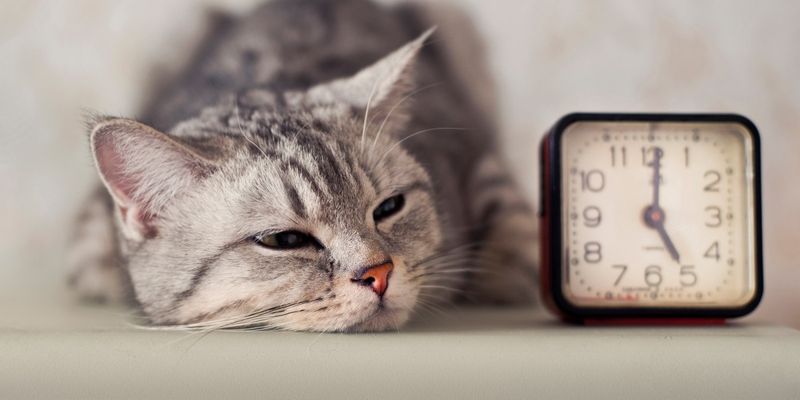
Alarms, whether for waking up or emergencies, can be jarring for humans and distressing for cats. The abrupt, loud sound can startle them, leading to aggressive behavior as a defense mechanism.
Cats rely on routine and predictability, and alarms disrupt that sense of security. To help your cat adjust, consider using softer alarm tones or gradually increasing the volume to lessen the shock.
Offering treats and comfort immediately after the alarm can also help create a positive association. Understanding your cat’s need for a calm environment is key to reducing alarm-induced aggression.
Hair Dryers
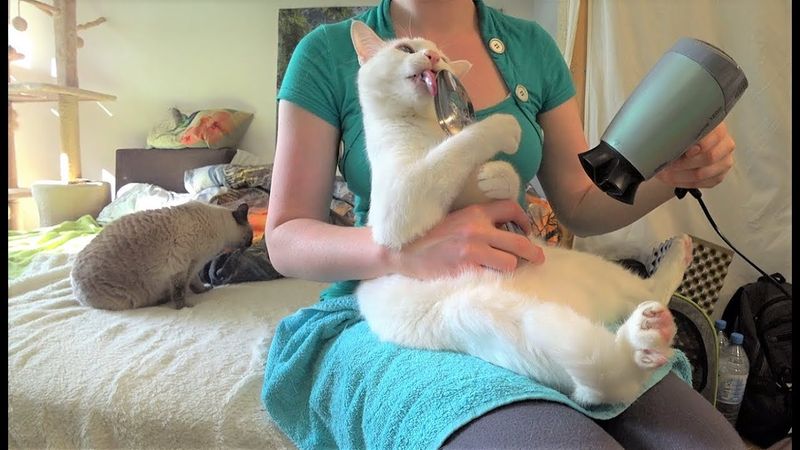
The roar of a hair dryer can be terrifying for cats, especially when aimed at them during grooming sessions. Its loud noise and hot air can cause stress and aggression, turning grooming into a battle.
Cats may swat or bite in response to the perceived threat. To ease this, introduce the dryer gradually, allowing your cat to sniff it while it’s off.
Using the dryer on a low, cool setting can also reduce stress. Alternatively, towel drying might be a quieter, more pleasant experience for your feline friend. Making grooming a calm process helps maintain peace.
Lawnmowers

Lawnmowers and their loud engines can unsettle even the bravest cats. The noise reverberates through walls, causing stress and potential aggression. For outdoor cats, this sound can send them running for safety.
Understanding this, it’s best to keep your cat indoors during lawn maintenance. Providing a quiet room with background noise like calming music can mask the disruptive sound.
Over time, your cat may become accustomed to the routine, reducing their anxiety. Respecting your cat’s need for a serene environment ensures they remain calm even during routine tasks like mowing the lawn.
Construction Noise

Nearby construction can introduce a cacophony of sounds that disturb cats. The clanging and banging can cause anxiety and aggressive behavior as cats try to escape the invasive noise.
Cats, being creatures of habit, find this disruption particularly distressing. Creating a quiet sanctuary away from the noise can help alleviate stress.
Using white noise machines or calming music to drown out construction sounds can also be effective. Understanding the impact of these sounds on your cat will aid in crafting a soothing environment for them amidst external chaos.
Car Horns

The blaring of car horns can jolt cats, triggering a defensive or aggressive response. This sound is often associated with danger or surprise, causing cats to become agitated.
For cats traveling in cars, this sound can be particularly distressing. Providing a quiet, secure carrier with familiar bedding can help them feel safe.
Playing soft music within the vehicle can also mask these external sounds. Ensuring your cat’s comfort during travel is essential for reducing stress and promoting a peaceful journey.
Bird Chirping

Bird chirping often captivates cats, stirring their natural hunting instincts but in a soothing way. Unlike disruptive noises, the gentle sound of birds can calm cats, easing their minds.
Watching birds from a window can become a favorite pastime, providing mental stimulation without aggression. To enhance this experience, create a cozy perch where your cat can safely observe outdoors.
Consider bird feeders outside the window to attract more feathered visitors. This combination of sight and sound offers entertainment that calms rather than agitates, enriching your cat’s indoor life.
Classical Music

Classical music has a calming effect on cats, providing tranquility in their environment. The gentle melodies and soothing rhythms mirror the natural purr of a cat, fostering a sense of relaxation.
Playing classical music during stressful times, like vet visits or grooming sessions, can ease anxiety and prevent aggression. It’s a simple yet effective way to create a peaceful atmosphere.
Interestingly, many shelters play classical music to help calm their feline residents, illustrating its universal appeal. Incorporating these harmonious tunes into your cat’s routine can support their emotional wellbeing.
Soft Wind Chimes

Soft wind chimes produce a gentle sound that can soothe even the most anxious cats. The delicate tinkling mimics nature’s serene sounds, providing a comforting backdrop.
These musical notes can help mask more disturbing noises, creating a tranquil environment for your cat. Hanging wind chimes near a favorite lounging spot can add to their sense of security.
Cats often find such ambient sounds relaxing, reducing their likelihood of stress-induced aggression. Utilizing natural, calming sounds like wind chimes can enhance your cat’s environment, promoting peace and contentment.
Rainfall

The sound of rainfall often lulls cats into a state of calm, reminiscent of their mother’s heartbeat. This natural, rhythmic sound is soothing, offering a sense of security.
Setting up a cozy spot by a window where your cat can watch the rain enhances this calming effect. Incorporating rain soundtracks when natural rain isn’t available can also help maintain this peaceful atmosphere.
Many cats appreciate the gentle patter, which masks harsher noises and promotes relaxation. Embracing the soothing nature of rain benefits your cat’s emotional health, providing a serene sanctuary.
Cat Purring
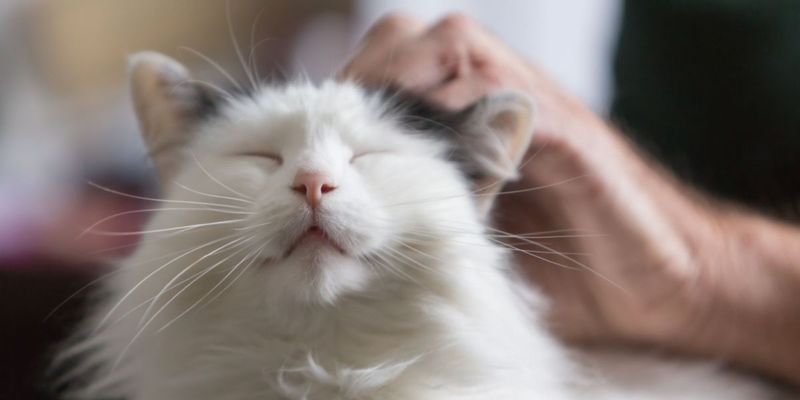
The purring of another cat can be incredibly calming, offering reassurance and comfort. This sound signifies contentment and safety, often leading to mutual relaxation.
Introducing a new cat? Allowing them to hear each other purr can ease tension and foster positive interactions. This natural sound helps reduce stress and aggression, promoting harmony.
Even recordings of purring can have a soothing effect, providing companionship for solitary cats. Embracing the comforting power of purring supports not only your cat’s wellbeing but also strengthens the bond between feline companions.

